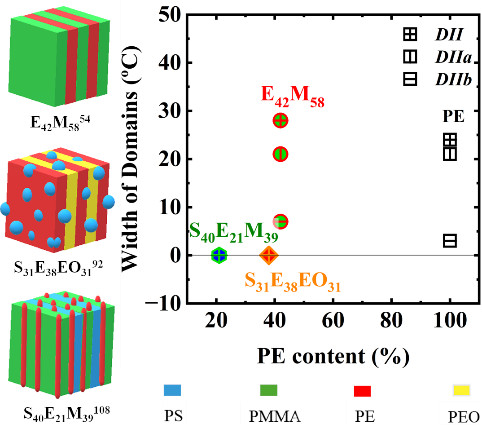News
The decisive role of confinement in enhancing or suppressing self-nucleation in polyethylene-containing block Copolymers
19.05.2025
Yilong Liao, Leire Sangroniz, Maryam Safari, Holger Schmalz, Alejandro J. Müller
Macromol. Chem. Phys. 2025, https://doi.org/10.1002/macp.202500056
The influence of confinement on the self-nucleation behavior of crystallizable polyethylene (PE) and poly(ethylene oxide) (PEO) blocks in block copolymers of different architectures was studied by differential scanning calorimetry. The amorphous blocks, polystyrene (PS) and poly(methyl methacrylate) (PMMA), with high glass transition temperatures, create glassy matrices that confine crystallization in the microphase-segregated block copolymers. For diblock copolymers (PS-b-PE, PMMA-b-PE), the PE blocks exhibit stronger melt memory than neat PE, as moderate confinement favors the preservation of the conformations adopted in the crystalline regions. However, when both ends of the PE block are tethered to glassy blocks, in PS-b-PE-b-PS and PS-b-PE-b-PMMA, melt memory and self-nucleation completely vanish as the confinement degree increases. In PS-b-PE-b-PEO triblock terpolymers, the self-nucleation of the PE block is hindered even at very low temperatures, where annealing is dominant. The PEO block undergoes a complex fractionated crystallization where self-nucleation disappears in the isolated, highly confined microdomains. SSA (successive self-nucleation and annealing) thermal fractionation results are similar for PE and PE blocks (i.e., hydrogenated polybutadiene), resulting from molecular defects caused by branching. Our results indicate that the melt memory of confined crystallizable blocks can be triggered by moderate confinement but completely suppressed when confinement is too strong.


